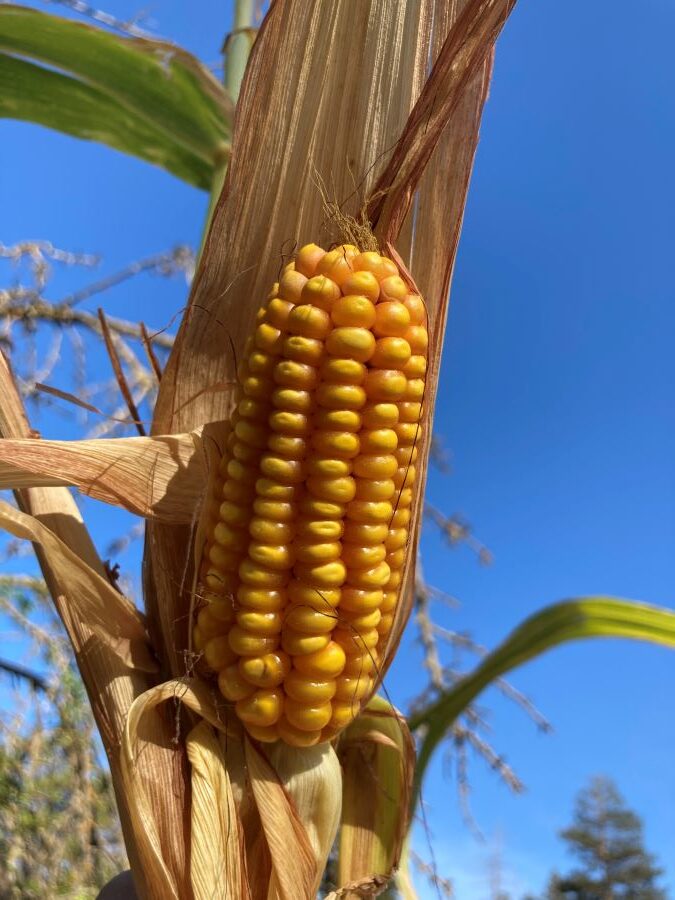
If you are like me and you have grown corn but suffered from low yields, you are not alone. If you have never grown corn but want to know how to get a better yield so your first grow is a good one, welcome. Lets cover some techniques that can be used to improve corn yield, and show how to grow more corn.
To improve corn yield, corn pollination must be improved. Corn is a monecious plant, meaning it has a male flowers and separate female flowers. For corn pollination to occur, the male pollen must pollinate the female flower. If the pollen does not make it to the female flower, then no pollination occurs and no corn kernels will form.
How to increase corn yield.
Increasing corn yield means that proper management of growing conditions must be met in order for optimal pollination to occur. Some aspects around pollination to consider are the timing of the male tassels and female silks, watering, plant spacing, and if needed manual pollination.
Manual pollination is not hard and can be quite enjoyable if you are a plant/gardening nerd. That subject will be covered later in this article.
Improve silk elongation and tassel timing.
One way to improve the pollination of corn is to improve the conditions that will lead to a better timing of the tassels and the silks. Tassels will emerge first, and later the silks will come out of what is essentially an undeveloped ear of corn. Tassels will eventually stop producing pollen and the silks will eventually dry out. So they each have a productive period, and getting the silks and tassels to be viable at the same time is key.
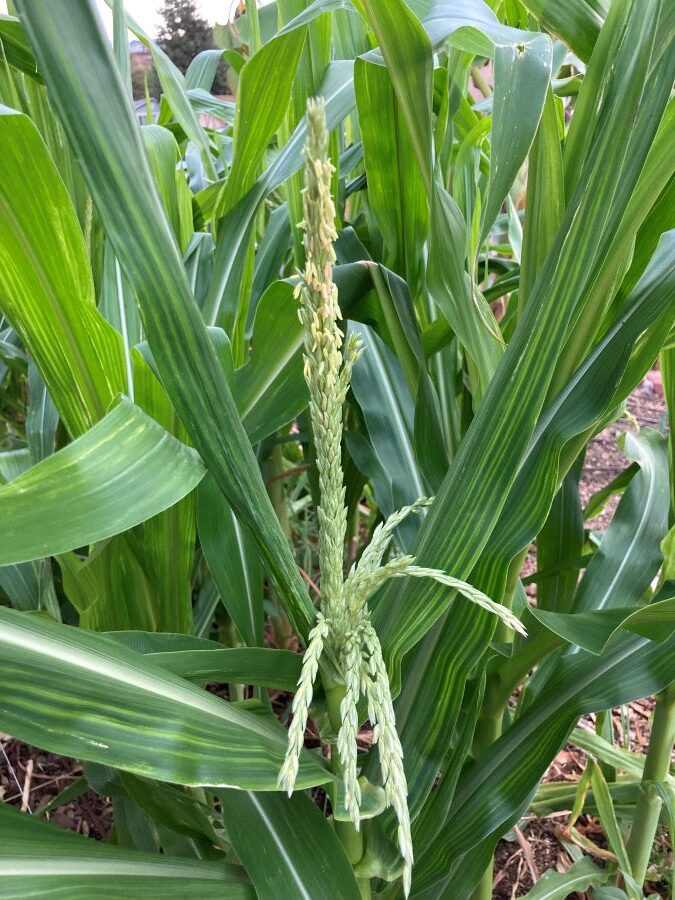
The productive period of the tassels and the silks will overlap if conditions are favorable, and this overlap is sometimes called the “nick” or I have also read it as “nicking period”. This is something that is both genetic, and condition dependent. Meaning that some varieties of corn produce silks much sooner after the tassels have emerged. This will lead to a longer period of overlap when pollen is viable and silks are receptive, which can increase yield. Environmental conditions can also cause an earlier or later silk emergence after tasseling.
For the nerds out there, a term used for the gap of time between tassels producing pollen and the silks emerging is called the anthesis-silking interval. Now you can use that in conversations to make yourself sound cool, but make sure to wear a monocle.
Adequate Water
One way to the assist the corn in optimum timing of tassels and silks is by making sure they receive enough water during the tasseling and silking stage of the plants development. Corn silks grow, or elongate when there is adequate turgor pressor within the silks. Turgor pressure simply put, is the water pressure within the cells of the plant.
If there is conditions such as drought, wind, or heat, turgor pressure within the silks may drop and silk elongation/growth will slow or may even stop. This is because drought limits water availability to the plant, and dry and/or windy conditions will pull water out of the plant faster than if is humid or if there is no wind. Think of it like a hair dryer or a fan drying something out. Drought actually affects silk growth more than pollen production and can lead to pollen being released before silks emerge from the husks.
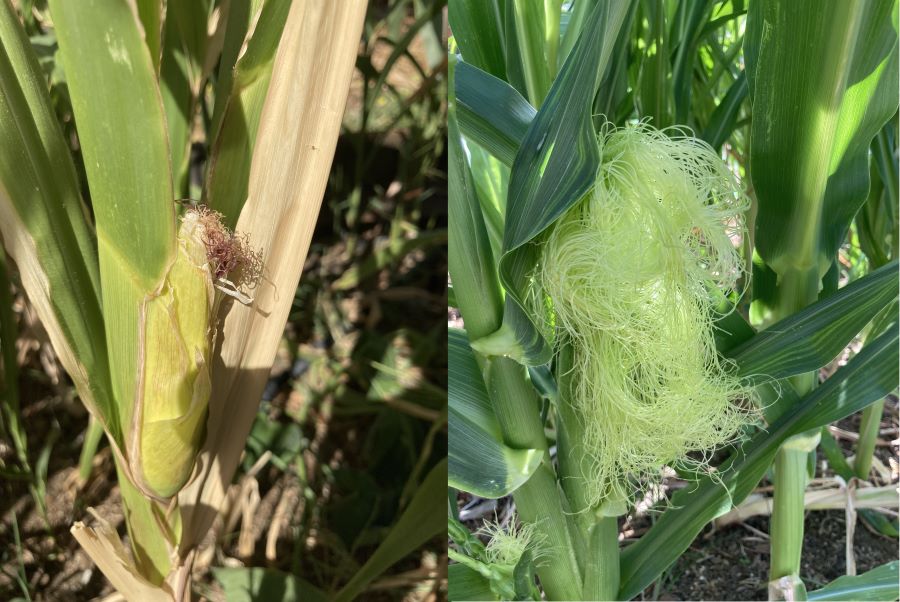
Drought should be a fairly obvious reason why turgor pressure may drop, but heat and wind will cause more evaporative losses than usual, especially from places like the leaves. All parts of the plant need water and if wind is drying out one part of the plant, like the leaves, water will be pulled from other areas of the plant with adequate water, to provide the needed water to the portion of the plant that is losing more water. This water redistribution within the plant can cause turgor pressure to drop in an area of the plant with more water, and increase pressure in the dryer areas. Imagine one balloon full of water, and another with no water. The balloon full of water will have a higher pressure than the empty balloon. If some of that water from the full balloon is distributed to the empty balloon the pressure in the full balloon will go down while the pressure increases in the empty balloon.
So if water is pulled from the silks to help another part of the plant survive, and water uptake by the plant is reduced because of drought or inadequate irrigation, silk growth will slow or stop.
As stated before, a loss of turgor pressure and reduced silk elongation can be an issue in high heat, but these are not the only issues with corn pollination when its hot. If temperatures are above 90 °F (32 °C) pollen may become non-viable. Unless you grow your corn in a big climate controlled building, this part will be hard to control.
Improve pollination through plant spacing and blocks.
One easy way to improve corn pollination in the garden is to plant the corn in close proximity to each other. Corn is almost entirely wind pollinated so they need to be close enough for pollen to have a chance to make it to the silks of another corn plant. Each corn plant can pollinate their own silks but if you are going to save seeds this can limit genetic diversity. This is because one corn plant could hypothetically pollinate all the other plants. This would mean that all the seed saved for next year would be genetically similar. If that happens multiple times (crop cycles) the corn can suffer from gene depression, basically becoming inbred.

To make sure corn is in close proximity to one another you can simply plant in blocks. These blocks don’t actually have to be square, it can be a rectangle, or a circle, they just need to be in a group. Planting corn in blocks increases the chance of pollen from each corn plant falling or being blown onto the silks of another corn plant. If corn is planted to far apart the pollen may fall to the ground before it even has a chance to fall onto any silks.
Pollen typically travels less than 50 feet (15.24 m), but that doesn’t mean if the distance between plants is 50 feet or less they will be pollinated. Pollen will disperse in the air and become less and less concentrated in a given volume of air. Think of smoke, it is very concentrated at the point of origin, but as it floats or gets blown away, it becomes much less concentrated.
You want a high concentration of pollen in the air around the silks so they have a better chance of being pollenated. Naturally one may think planting the corn as close as possible would be a good idea, but planting to close can also hinder pollination.
Leaves on corn can be quite large and if corn is planted to close together the leaves can block access to the silks that pollen may have had access to if planted a little further apart. This leaf area and its relation to the land is important to corn growers and researchers, and it is called LAI, or Leaf Area Index.
If corn is planted close together a large portion of the pollen may end up on the leaves, but the pollen can be shaken or blown off and hopefully land on the silks. The silks have tiny hairs on them called trichomes that help grab onto the pollen. This helps the silks grab any pollen that comes in contact with it. So any pollen that rolls off a leaf can hopefully be grabbed by the hairs on the tassels, but proper spacing should still be followed.
If planting to far apart is not good, and planting to close together is not the best, how far apart should corn be planted?
Corn gown by farmers is typically planted 8-12 inches (20.32-30.48 cm) apart in rows, with row spacing being 20-30 inches (50.8-76.2 cm) apart. Some research has shown that 20 inch spacing may be equal or better in yield than the typical 30 inch spacing.
One other row spacing technique is to use double rows. Instead of planting a single row, and then another single row 20-30 inches apart, 2 rows can be planted together. So 2 rows spaced 8-12 inches (25.4-30.48 cm) apart, then a space of 20-30 inches (50.8-76.2 cm), and then another two rows and so on.
If you want to read more about the the 20-30 inch row spacing you can check out the article at Iowa State University here.
How to improve pollination manually.
The final way you can improve pollination is by moving the pollen from the tassels to the silks yourself. This is actually very easy and if you don’t have a large number of plants it isn’t that difficult. It is a technique that is probably best used on blocks of corn smaller than 100 square feet (9.2903 square meters). That is just my opinion though, it is not a hard and fast rule. If you have a bigger block of corn and want to do it, go for it.
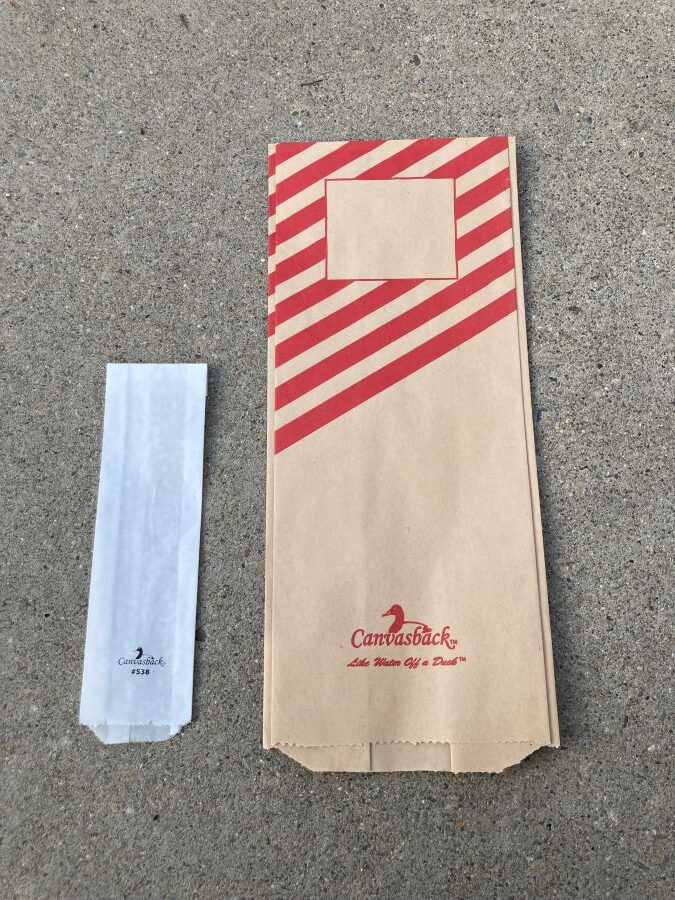
The process is very simple, all you need is corn tassels that have emerged from the corn, and a bag to collect the pollen. After the tassels have come out of the top of the corn, place a bag over the tassels, bend the corn plant and tassels slightly to the side and tap the tassel and bag repeatedly. This will free pollen from the tassels and the pollen will land in the bag.
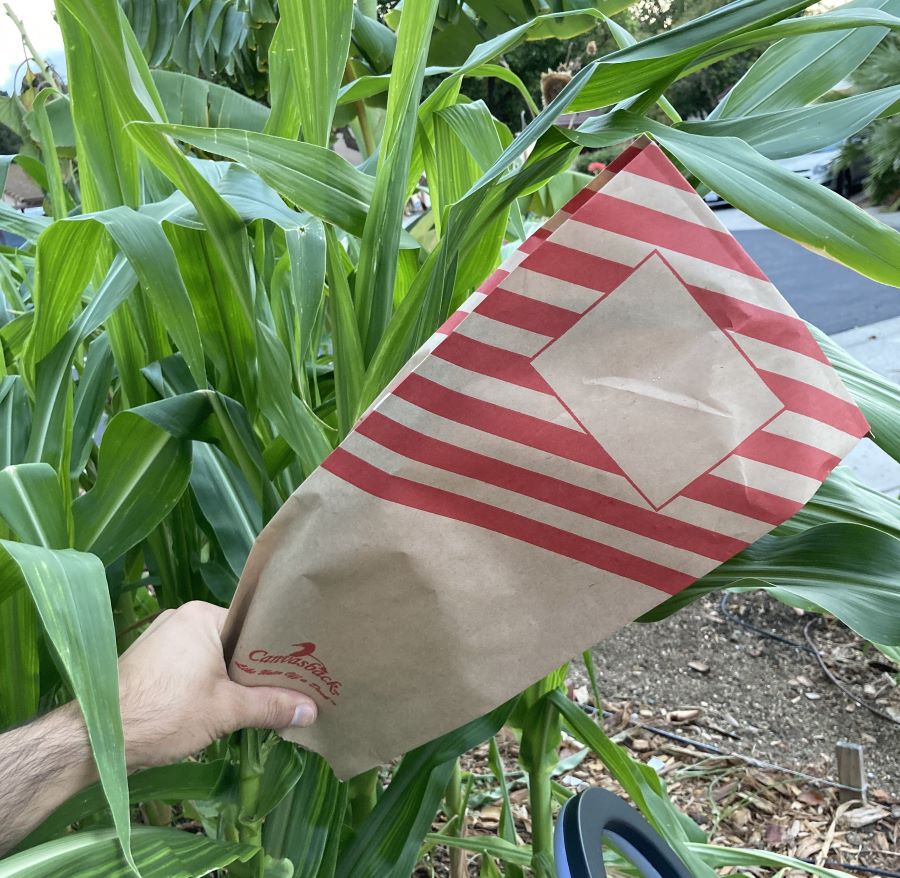
After you have collected the pollen in the bag you can then take it to some silks, preferably on a different plant and pour the pollen on the silks. Do this for each plant and try to pollinate a different plant each time. I like to do this each day for a few days to make sure each plant is well pollinated.
If you also plan on breeding the corn or at least keeping seed, a small bag to cover the tassels and emerging ear of corn may be necessary. By covering the corn silks before emergence you can allow the pollen to be deposited only on the plants you want and this way you can improve genetic diversity. Without the small bag covering the tassels you can not be assured that the silks have been pollinated by only the pollen you want. This is a little outside the scope of this article though.
If you don’t want to bag the tassels to collect pollen that is fine, there is an easier way. You can simply go around to each corn stalk that has tassels and tap the corn stalk just below the tassels. You can use your hand, a stick, a broom, whatever is easiest for you to do.

I use this method more frequently then the bag method because it is much faster and sometimes I can’t even reach the corn tassel to put a bag on it. It does lack the control of pollen placement that the bags offer but it saves heaps of time. It also acts a little bit more like nature would, but instead of wind dislodging the pollen, you are just knocking some if it out.
It doesn’t even have to be done one stalk at a time. If you can tap on multiple stalks at once, you will save even more time.
I hope this has helped you in some way, good luck growing.
